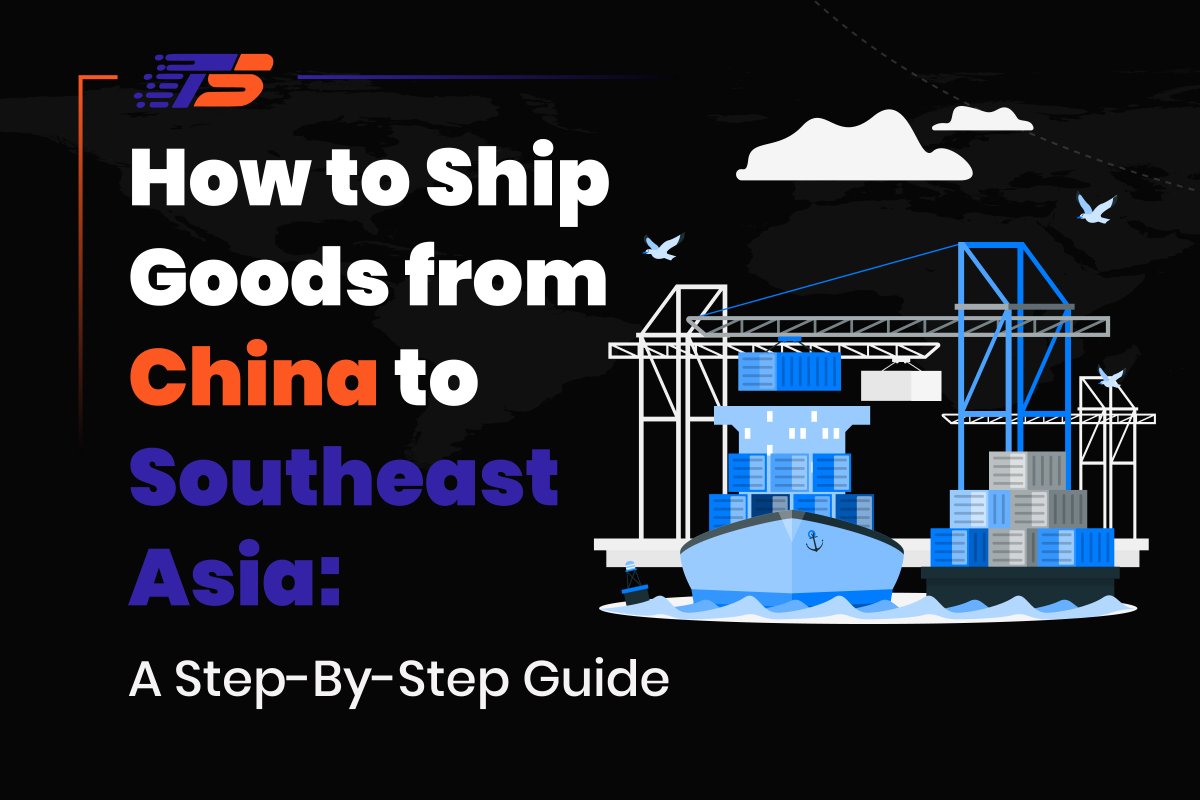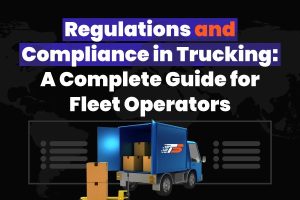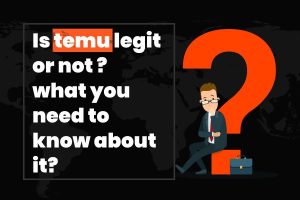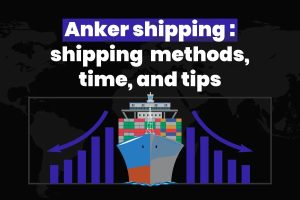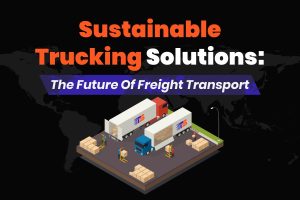Grasping the entire process of shipping goods from China to Southeast Asia is critical. This process includes selecting the most efficient shipping method, calculating costs, navigating customs, avoiding typical delays, etc. This Guide offers a brief overview of sea, air, and express shipping methods, estimated transit times, essential regulations, and tips for companies of any size to ensure deliveries across Southeast Asia run smoothly and economically.15:03
Introduction
Managing provides for flexibility in the ability to effectively coordinate on with consideration. It’s evident that thoughts and reliable partners can go a long way to getting the job done correctly. A business must not only decide the best way to ocean fright, air freight, or land freight—but sufficiently and effectively manage and configure, including proper compliance documentation (invoices and certificates of origin) and parcel tracking.
Working with experienced freight forwarders helps deal with challenges. An experienced freight forwarder will enable predictable customs clearance with greater reliability along the trade route, and allow for more efficiently managed.
With a , businesses can achieve success; embracing regional supply chain strategies while exporting products into respective markets like Singapore and Jakarta are just as important to a successful trade route. The ASEAN trade market is dynamic and good business will always find a way to deliver products to market despite hurdles along the way
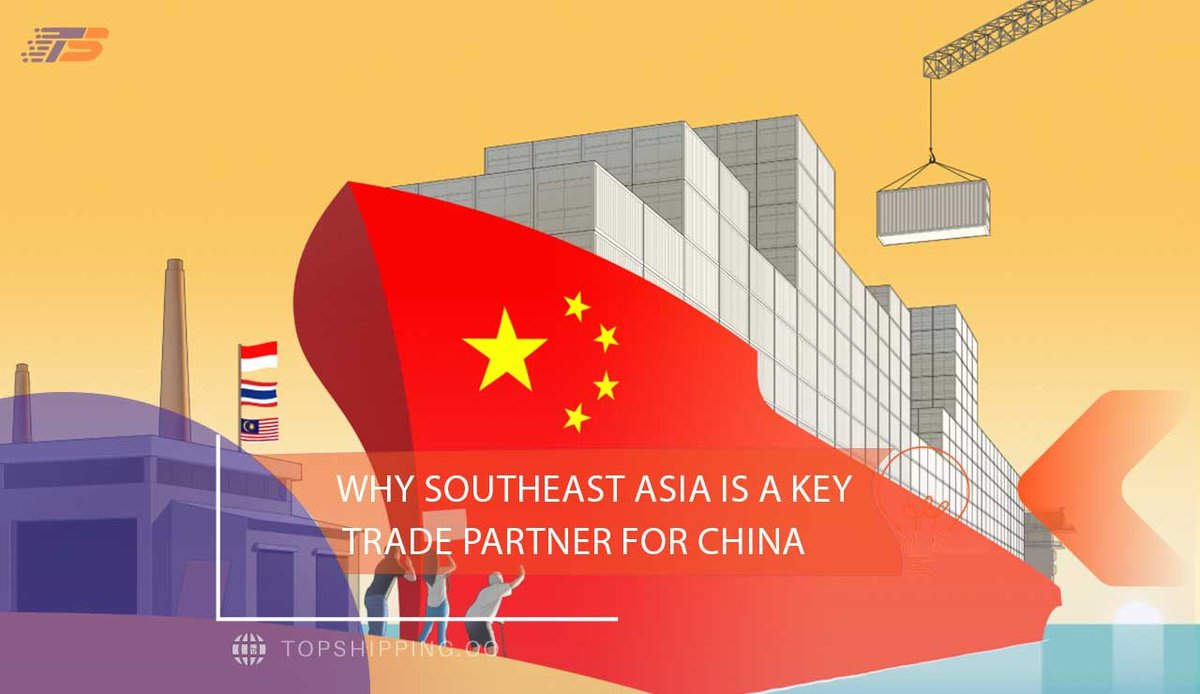
Why Southeast Asia is a Key Trade Partner for China
The increase in clearly demonstrates a strong relationship, positioning Southeast Asia as a and one of China’s leading . While China continues to experience consistent , Chinese firms are more likely to initiate a trade relationship with ASEAN due to the enhanced , growing , and increased demand from developing economies for .
The added benefit of thriving is likely to facilitate the development of where trade can be executed in ASEAN with competitive efficiency if so, Southeast Asia will be a primary target for firms looking to develop the next surge of global logistics and trade potential.
Who This Guide is For (B2B, E-commerce, Individuals)
This guide has been conceived for users from all backgrounds, whether it be an enterprise or more generally a business undertaking , or a startup learning the ropes of . Also included here are online entrepreneurs starting to navigate . This includes retailers who are dealing with . We describe practical and shipping approaches appropriate for cross-border shipping. It may be an option to be exploring or it may involve dealing with large scale . This guide includes variations to cover the spectrum between cargo services and retail export, to guide the specific audience with the specific logistics linking to their goals for shipping.
Overview of the Shipping Process
Knowing the is critical to follow the complete from China to Southeast Asia. The begins from the factory stage and proceeds through many different along the way, including packaging, documentation, customs clearance, ultimately creating a seamless . Each stage of the helps with the larger and ensures an efficient through the connected logistical process of the within the regional .
| Category | Key Considerations |
|---|---|
| Type of Goods | Determine Handle with proper Ensure accurate and correct Be aware of risks |
| Shipping Volume and Frequency | Analyze Decide between Plan for, and Consider and alignment with your |
| Target Country Regulations | Research and Prepare for Ensure smooth and ful for |
Step 1: Understand Your Shipping Needs
Before choosing a service, you need to and a solid understanding of your in relation to the overall . Once armed with the appropriate , the necessary solutions businesses need will reveal themselves based on, delivery dates, and destination requirements. Companies can improve their by planning from the beginning so they can budget accurately, avoid unnecessary costs, set realistic expectations as it relates to , etc. Whether you are establishing your or , it is important to have as much clarity as possible at this point in the planning process so you can coordinate efficiently with your freight providers.

Type of Goods: General Cargo vs. Restricted Items
Identifying your product’s is critical – especially when you’re distinguishing from or . Often, products like chemicals and batteries are classified as , which will require special handling, documentation, and strict . The proper has to do more than just getting the correct for customs clearance and transport options; it includes your insurance. Don’t put yourself in a position of spending money on transport or even the product and find out it’s a . The earlier you understand potential issues, the more you’ll save yourself in time, energy, and money, and you’ll maintain compliance to allow safe and legal shipment.
Shipping Volume and Frequency
Your is important to consider when it comes to deciding between models, as it affects cost and efficiency. For companies with or , planning around the and the expected consistent allows you to make useful name educated logistics operational decisions regarding costs. Larger loads are often best priced under while adding the perspective of allows you to maximize the typical use of space and resources. Even if you’re just moving materials once or are bringing loads as part of your overall , if you’re discuss packaging & shipping being utilized to meet a long-term strategy ensuring affordable and flexible is the only reasonable conclusion.
Target Country Regulations (Vietnam, Thailand, Indonesia, etc.)
Every ASEAN has its own set of , and before shipping, one should be aware of the . To ensure a proper , it is necessary know about the local , and before shipping. If businesses are only concerned with complying with and meeting the requirements of the , they run the risk of waiting for their goods to clear customs or incurring increased penalties; avoiding this situation relies on proper across borders. Your shipment will pass seamlessly through customs and will be in compliance with all relevant boutique regulations affecting the .
Step 2: Choose the Right Shipping Method
Determining the presence of and selecting the appropriate also depends on the budget, timeline and type of freight that you are shipping. In the case of time sensitive goods, your decisions often come down to balancing with speed. Air is faster but ocean shipping provides a better for bulk goods. Your also needs to consider the nature of your shipment, when you expect your goods to be delivered, and your long-term . Choosing the right will improve efficiency for every leg of your international shipping journey.
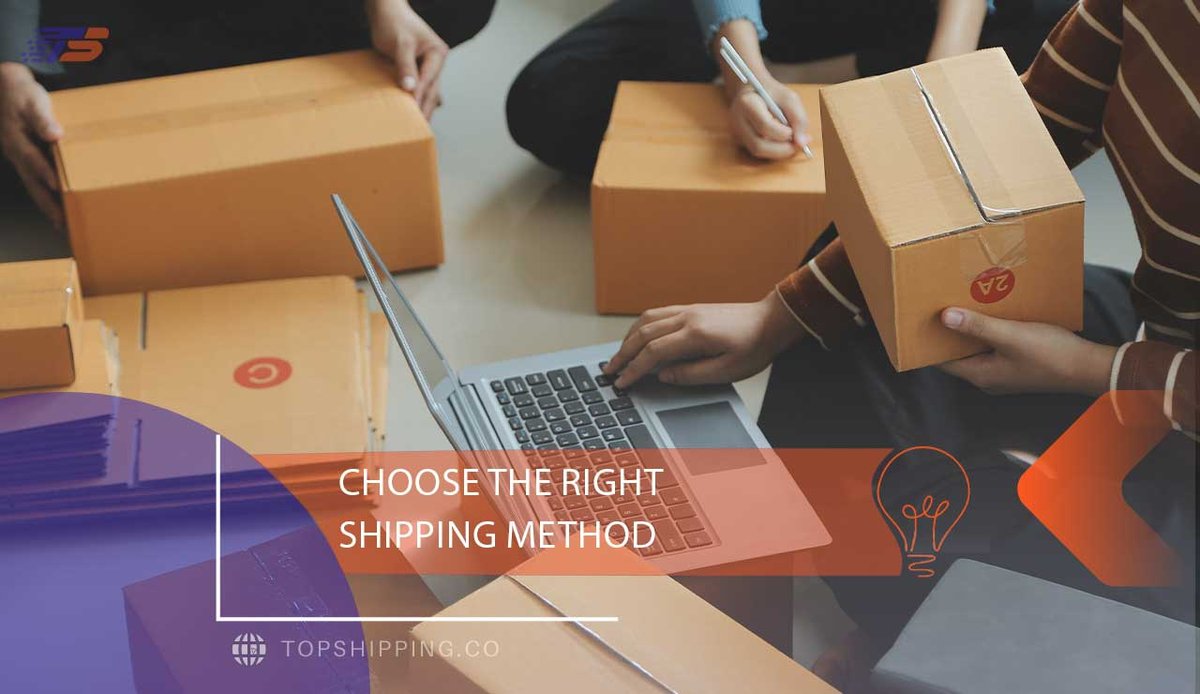
[wptb id=21575]
Air Freight vs. Ocean Freight
What is the ? There are three main factors to consider: , cost, and cargo suitability. For example, with , you will typically choose to ship using , even though they charge more in , because you do not have a lot of time to meet required. on the other hand, shipping by sea is usually less expensive for volume – but the transit times are long. So… when should you go with air freight or sea freight? I guess it depends on urgency, and your budget! Either must match your business and your customer expectations for delivery timelines.
When to Use Air Freight
In terms of fast shipping from China, air freight is the perfect solution for urgent cargo delivery and lightweight freight options. Air freight is also great for shipping high-value products such as electronics and fashion samples, or when a time-sensitive freight requires rapid delivery. Air freight is typically charged at higher rates, but it supports priority shipping on high-margin products where speedy delivery is worth the cost. While freight providers differ, you can be confident that if you choose a reputable air cargo service, your freight will be delivered on time and safely.
When to Use Air Freight
In terms of fast shipping from China, air freight is the perfect solution for urgent cargo delivery and lightweight freight options. Air freight is also great for shipping high-value products such as electronics and fashion samples, or when a time-sensitive freight requires rapid delivery. Air freight is typically charged at higher rates, but it supports priority shipping on high-margin products where speedy delivery is worth the cost. While freight providers differ, you can be confident that if you choose a reputable air cargo service, your freight will be delivered on time and safely.
When to Use Sea Freight (FCL vs. LCL)
For , companies that deal with for total space utilization and lower per-unit prices. While is preferable for smaller loads and by start-up businesses that want to take advantage of low-cost shipping without the volume to fill a container. Both methods provide scalable springboards; LCL with the consolidation option, and FCL benefits of efficiency and movement.
Courier Services and Cross-Border E-commerce Solutions
Trading online or other small business, sellers can rely on or other couriers that is providing a solution from China to Southeast Asia for doing delivery. Couriers are great for and there many benefits of using couriers too , and real time . Courier solutions are perfectly suited for lightweight goods and simplify while providing faster delivery options than regular freight solutions in the fast paced world of online retail.
Multimodal Transport Options
For more complex requirements in shipping, companies can benefit from a combined shipping methods, or a more hybrid shipping logistics model, which use different combinations of rail + truck + sea freight. This offers a great approach for companies to benefit from the speed of air or rail, the volume capacity of sea and the distribution reach of trucking, and creates flexible and optimized delivery routes for shippers. Using intermodal solutions from China creates better time and cost effectiveness, in conjunction with cross-border routing in Southeast Asia, connecting to an integrated transport network.
Step 3: Select a Reliable Freight Forwarder
Deciding on the can be a deciding factor in your shipment. A good will ensure the correct, the necessary accuracy in documentation and timely delivery to prevent significant delays. When services, companies should consider the logistics providers’ communication, transparency and experience with international freight.
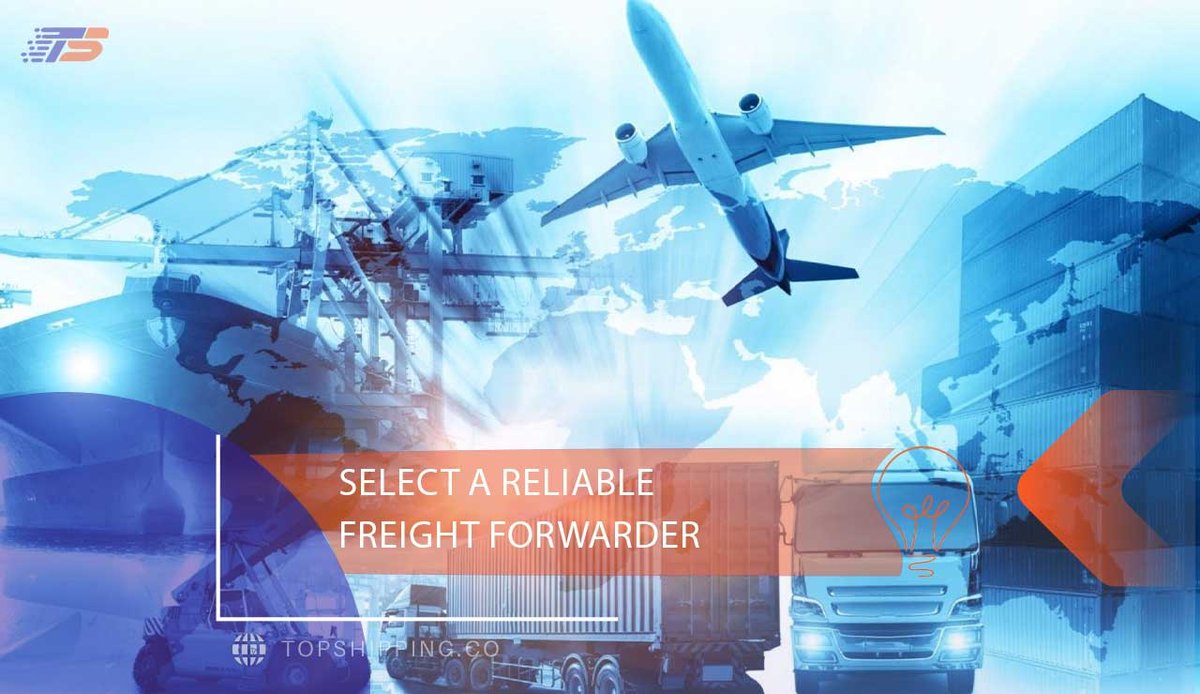
[wptb id=21579]Having poor options can lead to hold-ups with customs, missing deadlines, and even lost cargo. Therefore, vendor screenings are extremely helpful for finding a trustworthy .
What to Look for in a Freight Partner
You may think a just rates, but a comprehensive should include the following aspects such as proven , communication quality to keep you informed, and a strong system. A will provide strong , include a wide range of , and be aware of wider issues related to your cargo. When it comes to selecting your , consider important factors such as responsiveness and a history of happy customers.
Top China-Based Freight Forwarders for Southeast Asia
When shipping cargo from China to Southeast Asia, you can enhance the entire process by shipping with a trusted . The routes shipping companies take in Southeast Asia are often developed based on cost-efficient methods from their own experience and apparent customers’ awareness.
The best usually keep strong and are a central part of the for the region by also exporting their other regional cargo as well. These focus primarily on the ASEAN trade lanes. They have plenty of experience providing for a wide range of business types and cargo types. The main due diligence is reviewing the scope of the services, pricing models and what sort of carrier can access that trade lane, especially for a timely and cost-efficient option to reach Vietnam, Thailand and Indonesia.
Platform vs. Traditional Forwarder (e.g., Freightos vs. Local Agent)
When considering a like Freightos or a traditional , it is important to evaluate convenience against customization. Digital platforms provide , and so that they are quite similar to a freight company that can enable fast, transparent, and tech-driven businesse particularly for organizations with standard shipping requirements.
However, local may provide more customized support, pricing flexibilities and a best solutions based upon their regional expertise. If you like and speed, go platform. If your shipment requires tailored support or involves complicated markets, a trusted agent may provide a more risk-averse means to manage your .
Step 4: Prepare Your Shipment
Proper is necessary for your items to be sent on time, arrive intact and free of customs complications. The describes much more than packing up boxes: it includes labeling correctly, exporting packaging securely, and preparing the documentation for both the original and destination guidelines.
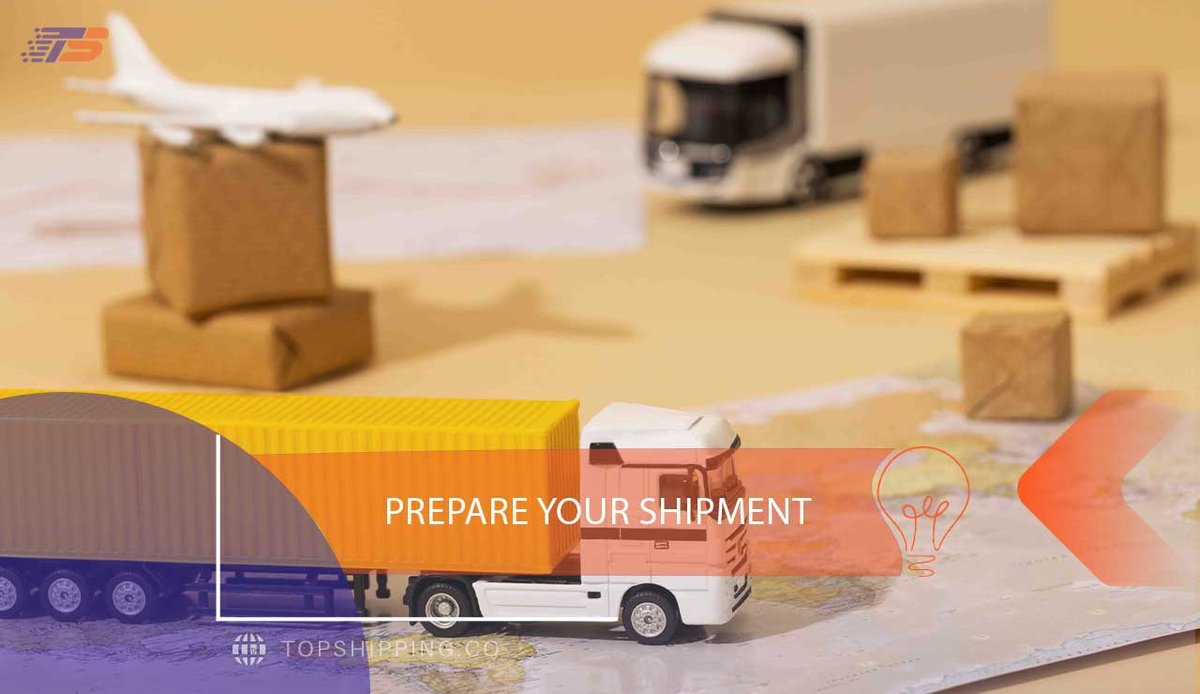
[wptb id=21394]You will begin with ensuring your is appropriate for the items being sent; for instance, fragile items need to be cushioned, and hazardous materials need regulatory-approved containment. To avoid delays and ensure provider success, make sure your includes:
Verified HS codes and commercial invoices
Proper export and import permits (if necessary)
Country label and markings
Bill of distinguished or air waybill
If your shipment failed to meet the accepted {{export readiness}} standards, potential consequences might be delayed shipments, damaged shipments, and ultimately rejected cargo. Committing to proper will allow you to stay compliant throughout the process, while saving time, money and reputation down the line.
Packing, Labeling, and Palletizing
Proper packing, labeling and palletizing is absolutely critical to ensuring your cargo survives transit and clears customs.
You should begin with that adhered to . Use sturdy boxes and the appropriate and if needed, remember to use in order to protect against moisture, especially important in sea freight.
Then follow the labels that complement your documentation. Labels need to easily identify product, HS code and delivery destination, preferably in English and the receiving country’s native language.
When palletizing:
If you are shipping internationally use an ISPM 15 certified wooden pallet
Stay with standard to optimize container use
Observe the proper (with heavier items on the bottom and ensuring stable footprint)
Use corner boards and strapping for extra reassurance
Failing to properly label or make poor pallet choices can delay clearance or property damage. By following international and industry best practices you are protecting your products and reputation.
Required Documentation
Accurate and completed is one of the most important parts of international shipping. Missing or incorrect can result in fines, delays of shipments, or rejected shipments altogether. Use this to help you consider what you need to get prepared ahead of time:
• Commercial Invoice – an important component for and customs valuation
Packing List – a breakdown of what is included in shipment with weight, and details of packaging.
Bill of Lading (B/L) or Airway Bill (AWB) – contract of carriage
Certificate of Origin – certification of where the goods were manufactured. Often requested for preferential rates of trade
Import Licenses(where required) – particularly relevant if you are shipping a certain product to Southeast Asia
Other that may be required by the destination country.
Your freight forwarder or logistics provider can help you generate and validate all the , but you are ultimately responsible for the accuracy of all . These must match the cargo details of your shipment, and must consistently match across all records.
Nailing down your can help you have less risk when subject to a customs inspection, expedite clearance time for the authorities, and build your reliability as a shipper.
Commercial Invoice
The is arguably the most essential document in international trade. It acts as a as well as a and is the document required by customs authorities for assessing duties and confirming the authenticity of the shipment. A correctly filled-out should have the following information:
and date of issue
Complete including contact information
Clear description of the product including quantity and price per unit.
of the goods (in whichever currency you agreed)
Country of origin
(Harmonized System code) of the product for classification
Conditions of sale and delivery (otherwise known as Incoterms)
[wptb id=21398]
Packing List
A packing list for customs is a document that is used alongside a commercial invoice and is used to give an accurate count of the physical contents of your shipment. Packing lists are commonly used as an itemized shipment list and help customs officers verify what is being shipped without actually opening each box. The commercial invoice states value and price, while the box contents document states what the shipment physically is, such as:
The proper product names and SKUs
Item count per box or pallet
Carton dimensions and number of packages
Net/gross weight of each package and total shipment.
Marks and numbers for easy identification.
[wptb id=21402]The packing list eases warehouse handling, simplifies customs inspection, and decreases risk of loss/misplacement. The packing list should exactly reflect contents as packed, and should be carried with original shipping documents for your freight forwarder and consignee.
Bill of Lading / Air Waybill
When one of the most critical components of the logistics process is the preparation of key transport documents, such as the for sea freight or the for air shipments. The documents are both a and a , they provide the evidence of shipping as well as term for the shipper and carrier to mobilize for the needing shipment. For example an is issued from the shipping line and includes details such as the , and . This information ensures that all parties in the supply chain have the same understanding of the cargo’s journey through the trade route.
The same applies to the for air freight, as it identifies the shipment with a unique reference number and establishes the contract for the movement of goods to destinations like Singapore, Malaysia.
[wptb id=21409]When one of the most critical components of the logistics process is the preparation of key transport documents, such as the for sea freight or the for air shipments. The documents are both a and a , they provide the evidence of shipping as well as term for the shipper and carrier to mobilize for the needing shipment. For example an is issued from the shipping line and includes details such as the , and . This information ensures that all parties in the supply chain have the same understanding of the cargo’s journey through the trade route.
The same applies to the for air freight, as it identifies the shipment with a unique reference number and establishes the contract for the movement of goods to destinations like Singapore, Malaysia.
Certificates (e.g., Certificate of Origin, MSDS)
When considering , you will need to get the right certification and documentation, which includes the and for compliance with the regulations and smooth transit. The , which may also be called COO, identifies the country of production. The COO may allow preferential tariff rates under a trade agreement like those in the ASEAN region, making it a powerful ally in reducing transportation costs, specifically for .
[wptb id=21413]An is essential for hazardous materials, providing important product safety information, including handling and shipment expectations to ensure the shipper is compliant with the safety requirements in the receiving country (i.e. Thailand or Vietnam). These documents/requirements are sometimes optional, sometimes required depending on the goods and the final destination, but essential for clearing customs, and avoiding delay with .
When a business produces accurate certificates, they are confirming compliance with local regulations/requirements to facilitate an efficient supply chain. If businesses better understand how to properly get documents for their shipments that may be electronics, chemicals will instill confidence when exporting to Southeast Asia. Freight forwarding companies will love to help with logistics, compliance and safety issues.
Step 5: Manage Export & Import Customs
Completing the is a very important step in . In international trade, getting products into a foreign market is important to ensure convenient access across the border without delays that could cost money and time. The requirements require attention to detail, understanding what is included in the including commercial invoices, packing lists, certificates of origin and other documentation as stipulated by the and again by the imports process by the trade regulations of other Southeast Asian countries, including Malaysia and Indonesia.
It can be very advantageous to use a competent to help with the because, they will coordinate the communication and work with the authorities to ensure approvals and will arrange for the process. Each country in the Southeast Asian region has its own set of rules regarding which have an applicable structure.
It is essential to understand requirements in Southeast Asia; to avoid common compliance errors including incomplete documentation or improper goods classification. With an eye for detail regarding the documentation and using skilled freight forwarders you can ensure your runs smoothly and keep up with the established rhythm of your along the trade route.
By being diligent to avoid cross-border delays and complete your paperwork correctly, you will be strong with the reliability of to meet delivery timelines to support a fast-growing and evolving ASEAN economy.
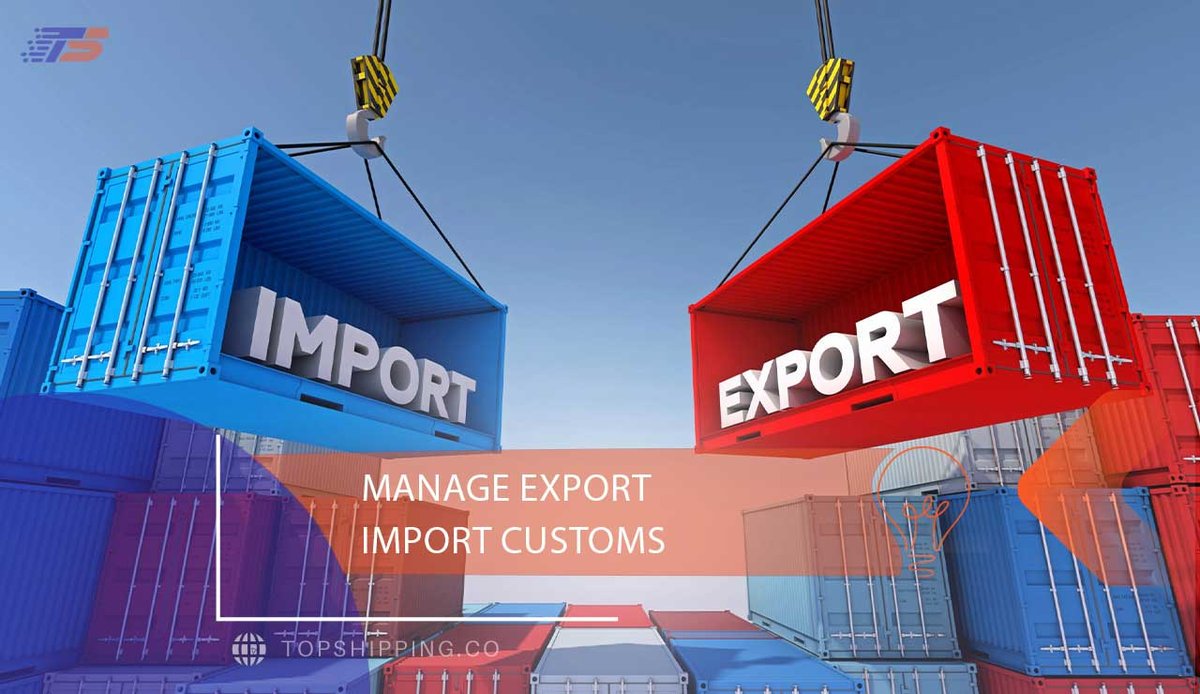
[wptb id=21417]
China Export Requirements and Clearance
To effectively export from China to Southeast Asia, it is essential that companies follow the necessary steps driven by Chinese export regulations. The first step is to obtain an export license China, which generally is needed for any goods. Exporters must also act as the exporter of record, ensuring that all legal and regulatory obligations are met on behalf of the Chinese authorities.
One of the most significant steps is the customs declaration, which must be made through the electronic export declaration in China system. One of the common mistakes that cause delays in China-side export clearance is failing to provide accurate or timely information here.
Additionally, most products are subject to a CIQ inspection – where the inspection authority (China Inspection and Quarantine) checks that the goods meet all quality, health and safety standards. If a shipment does not pass this step, it could be delayed or rejected. Consequently, knowing the subtle nuances of China customs rules and the necessary documentation can help ensure that the outbound clearance goes as smoothly as possible.
Customs Processes in Southeast Asian Countries
When it comes to shipping from China to Southeast Asia, understanding the various types of is essential, as each country has a different contractual process for imports. require precise and to establish the tariffs on current imports, while the has strict controls over the documentation presented before conducting an inspection. goes through a process which may require a to comply with customs clearance.
An is also important if you import restricted goods to avoid seizures. Adhering to the appropriate documentation process and local tariff structures and inspection rules can help you avoid penalties and guarantee a successful of your cargo.partners with experience and local knowledge can provide the best advice to ensure efficiency when . The bureaucratic can be cumbersome, and therefore, a freight forwarding partner can help consolidate paperwork and verifying the correct deadline or efficiently across the .
Vietnam, Thailand, Malaysia, Philippines, Indonesia
To understand the of Vietnam, Thailand, Malaysia, the Philippines, and Indonesia is critical to because there are regional clearance variations for each country.
In Vietnam, port customs in Asia such as Hai Phong not only require a lengthy document list and accuracy in its submission, but also precise detail for with a minimum of mistakes. In Thailand, Laem Chabang requires local compliance and tariff rules are enforced.
Malaysia has Port Klang which is the prominent and uses a to facilitate the processing of , but agents in the area are still needed to assist clearance. The concerned authority in the Philippines has no obligation to be expedite entry and may ask questions about storage which could have been prevented through pre booked carriage and timely .
Indonesia has the notoriety of strict permit requirements pre-seeking preventing import clearance delays at Tanjung Priok. Local freight forwarders do the work in putting together the import documentation with compliance to within the to facilitate the required steps and work towards improved for ease of .
Common Mistakes and How to Avoid Delays
Avoiding is critical when to prevent . A in invoices or missing often causes , leading to a in the . Improperly classified goods will slow down the in a such as Malaysia or Vietnam. To , make sure the is accurate and comply. Working with experts helps facilitate smooth , as the document during from China will always be consistent. Maintaining alignment with the will prevent any with your and ensure is expedited.
Step 6: Track and Manage Delivery
Ensuring effective is essential when to ensure the goods are delivered to the final destination, simple as that. will provide you with a level of that allows you to observe your shipments using a and offers you with allowing your business to stay on top of shipment visibility. This level of is essential in the complex world of where cargo may be tracked from ports in China such as Shanghai to the including destinations like Malaysia or Thailand. Shipment monitoring through digital logistics platforms minimizes errors ranging from wrong deliveries to misrouted cargo because you are monitoring the entire along the entire . Last mile tracking delivers on its promise to ensure a seamless hand off to local couriers in Jakarta reducing delays in . Working with a company that has a tracking application that enhances , gives your business a seamless process through to delivery.
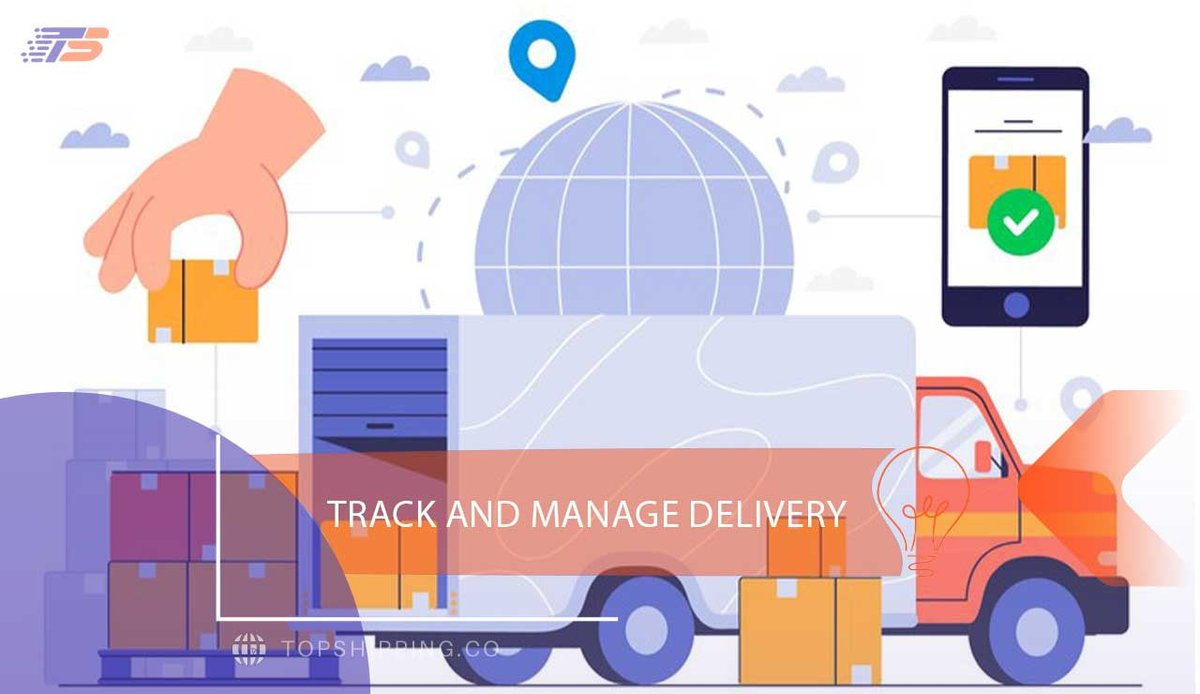
[wptb id=21421]
Transit Time Estimates by Mode and Country
It is important to know when as will differ by the method of transport and the destination country. The is typically 3-7 days to countries like Vietnam or Thailand which gives a tighter for shipments that need to be sent urgently; however, the to Malaysia or Indonesia is often 10-20 days long as the shipping duration is a major factor and can be affected by time (if it does not get stuck).
Delivery time will depend on the in and how much delay occurs before Mulitmodal transport can be utilized. can impact expectancy as well, for instance, Vietnam is faster than the Philippines because of more efficient port operation and shorter whereas less transport duration was added to the shipment. By working around these considerations when implementing your , it will lead to more effective and to better timing for shipments. We hope this information is useful in regard to .
How to Use Tracking Systems Effectively
It is crucial to have for in order to provide businesses the upper hand for their . Cargo monitoring platforms are logistics software tracking dashboards that allow businesses to have real-time freight updates from each of their partners and carriers during . These apps have tracking capabilities, through , which informs the events like the departure of an order from Shanghai or if it has arrived in Bangkok. This means that businesses are able to achieve a level of during their by tracking shipment milestones. Additionally, a can be set up with alerts, which keeps businesses updated on the shipment delivery status, allowing for a faster response to the arrival of a shipment and preventing further delays to the process. Utilizing systems increase the efficiency of the shipping process and promote the smoothness of customs clearance delivery plans to the.
Working with Local Delivery Partners in Southeast Asia
Learning the is essential so you can understand the significant elements when planning your for {{shipping from China to Southeast Asia}}. The will depend on many conditions including the mode of transport (air/sea), weight of the cargo, final destination, and even time of year, which will all impact how the freight fits into your assumption. For example, the costs for air freight to Vietnam may very well exceed shipping via ocean to Malaysia, therefore it is important to conduct a comprehensive to get an idea of your . When you engaged with your freight forwarding partners to obtain a , they would have helped by mapping your costs against a so that you could see the big picture. Unexpected fees, such as customs duties or port charges, can inflate , so including buffers in the budget is wise. To , consolidate shipments or negotiate rates with carriers in . This approach ensures cost-efficient while maintaining .
Shipping Costs and Budgeting
Learning the is essential so you can understand the significant elements when planning your for . The will depend on many conditions including the mode of transport (air/sea), weight of the cargo, final destination, and even time of year, which will all impact how the freight fits into your assumption. For example, the costs for air freight to Vietnam may very well exceed shipping via ocean to Malaysia, therefore it is important to conduct a comprehensive to get an idea of your . When you engaged with your freight forwarding partners to obtain a , they would have helped by mapping your costs against a so that you could see the big picture. Unexpected fees, such as customs duties or port charges, can inflate , so including buffers in the budget is wise. To, consolidate shipments or negotiate rates with carriers in . This approach ensures cost-efficient while maintaining .
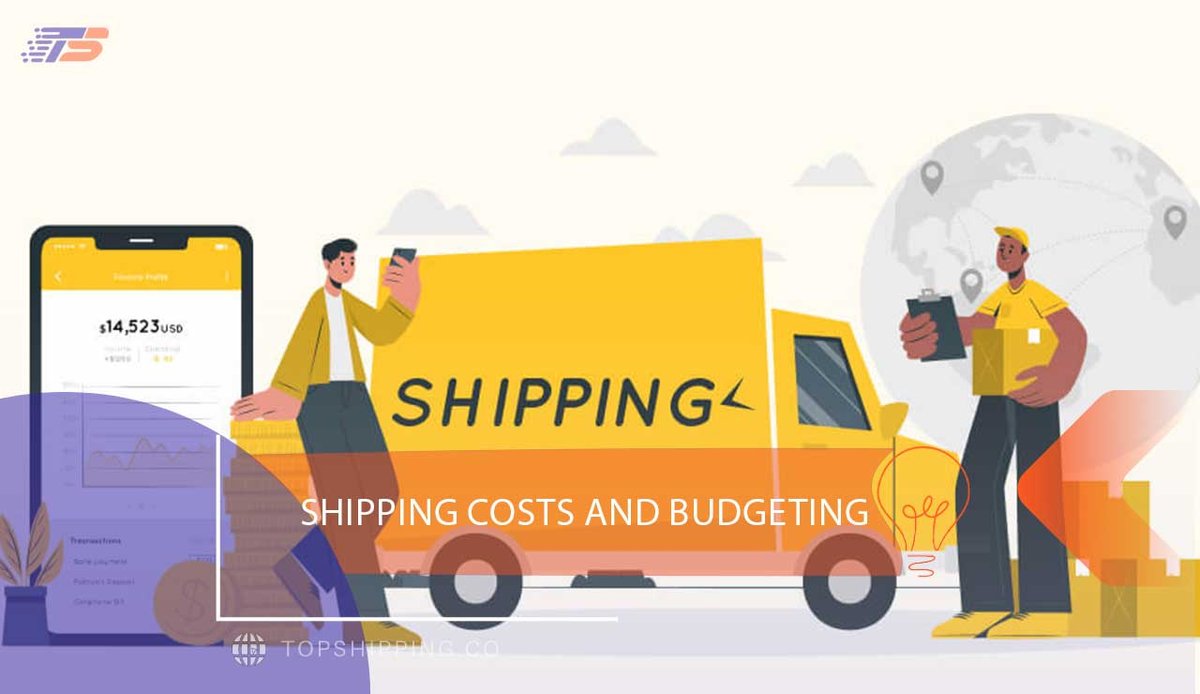
[wptb id=21425]
What Affects the Cost of Shipping
Several determine the when , impacting the . The include the , which varies by like air or sea, and, with larger containers increasing expenses. Based on weight and volume, freight classes influence the pricing of routes to top SEA import markets such as Vietnam or Malaysia. Distance-based pricing and surcharges—including fuel surcharges and carrier fees—can also significantly affect the pricing matrix, especially when seasonal rates increase during holidays. Proper , where exported products are shipped via the best routes and shipment consolidation, can help during the. Rightly estimating freight charges allows the freight quote and to accurately estimate the cost of .
Hidden Fees to Watch For
When , there are a few things to keep in mind regarding which can increase the overall above what was initially quoted to you for .
For example, things such as and can often be charged as , which can often surprise unprepared shippers in such as Malaysia or Thailand. Quite commonly, there may even be a for documents like a as well as a for what is known as the in places like Jakarta. Charges such as commonly refer to charges your terminals charge for holding you up at the ports, and are commonplace in . Make sure to read your partner and carefully review your and all the fine print in your invoices, so you do not get penalties for any of these carrier . Proposed start can mitigate some of these surprises and help you reduce costs on using proactive and client communication with your carriers.
Tips to Save on Freight Charges
To when, businesses can adopt a by implementing . Combining smaller shipments into a single load secures a , lowering the in . If you want to with one of your partners, you can leverage a for your business and also complete a with other carriers. You’ll want to consider time periods to avoid the seasonal surcharges that accompany shipping during peak periods. This will assist in the quality of your . You can negotiate more favorable terms like , which could include using cargo shipments that fit container volumes when they are available, which goes to the bottom line. Tech platforms to compare freight rates or track your will assist to keep good rates with less cost in goods to countries like Vietnam or Malaysia.
Common Challenges and How to Overcome Them
When it comes to , businesses face various that can severely impact. A common is having a due to issues with or HS codes being off, leading to serious in like Malaysia or Vietnam. with freight forwarders can lead to other types of shipping bottlenecks like cargo being misrouted altogether. To avoid the , you need to practice normal by checking the paperwork twice and utilizing the best to enhance in real-time. In terms of enhancing during the process, checking with carriers and local agents can enhance communication. Minimizing delays from logistics can be resolved with proactive such as choosing various contingency options to address any port congestion. Ultimately, these processes can take place while maintaining an efficient and reliable process.
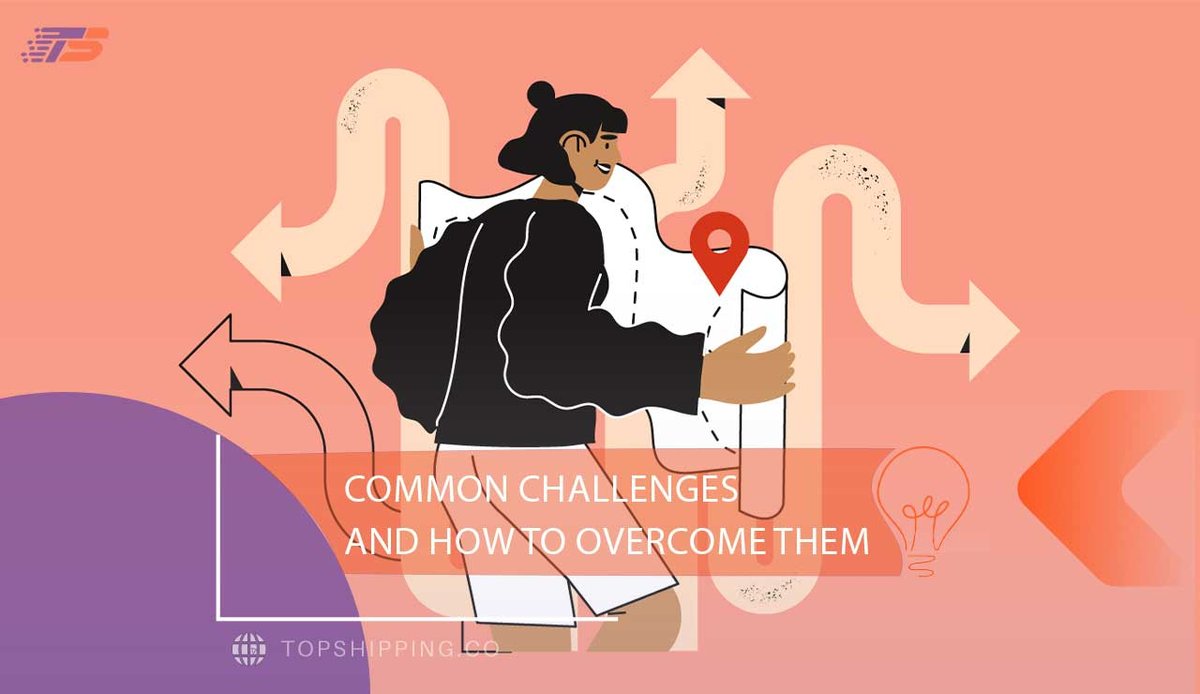
[wptb id=21429]
Language Barriers and Communication with Suppliers
Good communication is critical to as can lead to a costly . often lead to details, resulting in corresponding errors to . The makes a more convoluted experience, which can lead to delays in. To mitigate problems arising from this context, prioritize and the aim for clear, concise instructions. Also, consider engaging agents that have experience to remediate regulatory issues – this will help ensure the accurate of your shipments and thus better equip your business to ensure smooth to markets such as Malaysia or Vietnam.
Delays Due to Documentation or Compliance Issues
when , will result in and cause troubles to your . Small problems like an without the country of origin information can trigger a and a , exposing you to a . By carefully potential and the risk of being liable for a in top like Malaysia or Thailand can be avoided. A detail review of the will also speed up the process of your Consider partnering with professionals with expertise in to reduce potential errors and establish an effective process.
Logistics Disruptions and Seasonal Demand Surges
can be an issue when shipping cargo. Peak demand periods, such as, often lead to. You might also experience a due to during holiday periods such as Chinese New Year, causing a in processes. To manage the logistics surge events successfully, you can avoid or reduce bottlenecks by simply arranging freight bookings a little earlier ahead of these high-volume scheduling periods. Even more problematic are weather disruptions in such as Vietnam or Malaysia, with port congestion creating further delays in. Partnering with the Supply Chain and capabilities of your logistics team for can deliver a more manageable capacity issue to deliver on-time cargo during peak times.
Useful Tools and Resources
When shipping from China to Southeast Asia, using shipping tools like logistics calculators and freight rate finder sites provides advantageous capabilities for supply chain coordination. Businesses can use these online shipping tool to get freight estimate costs (including duties) using a tariff calculator to help develop logistics budget for China to ASEAN logistics. A customs lookup tool makes sure a business complies with ASEAN customs rules by giving access to a trade database for all tariff codes and regulations for top SEA import markets like Malaysia or Vietnam. Cargo tracking platforms can help level of logistics visibility with comprehensive tracking systems with real-time updates on goods on the shipment. Enhancing the logistics platforms with freight forwarding service provider adds transparency and efficiency in cross border shipping Asia and timely shipping.
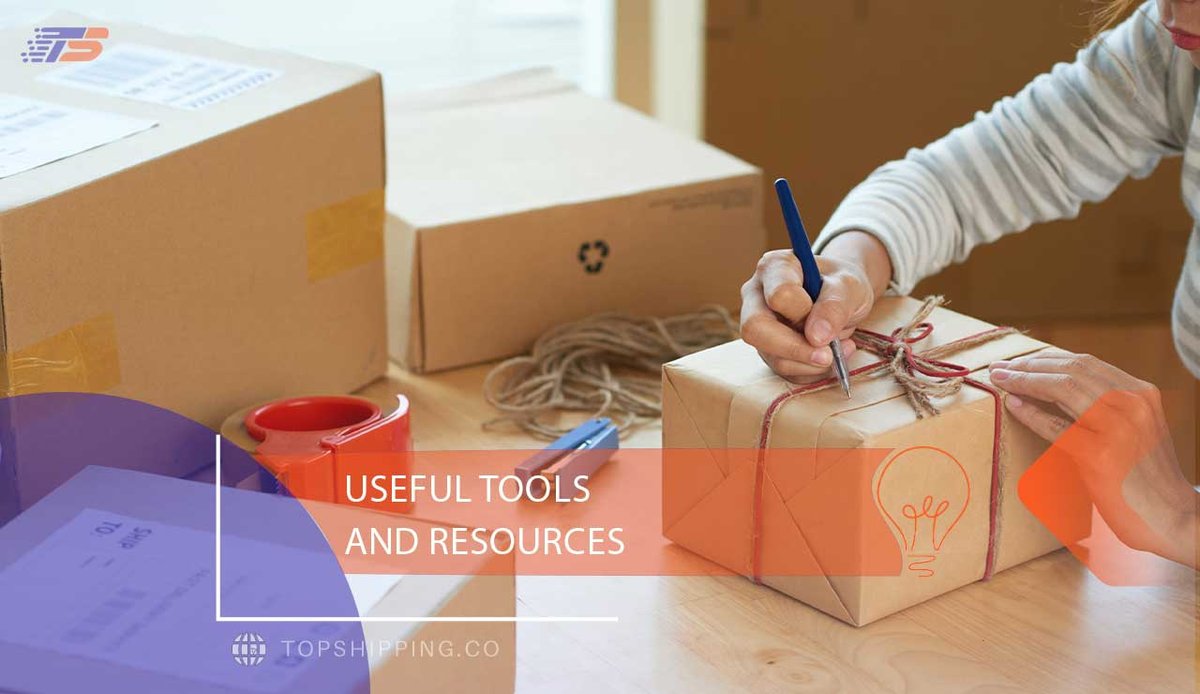
[wptb id=21433]
Freight Rate Calculators
For businesses , such as platforms make a huge difference for budgeting for . These tools use a to give businesses accurate quoted results, and help them plan out for their . It allows businesses to compare rates from multiple carriers to ensure that they are able to get in consideration as they can potentially reduce costs of shipments to many of the like Malaysia or Thailand. Integrating these tools with the they add an extra layer of accuracy for ensuring proper , which helps us work through the complexities of (cross-border shipping Asia).
Customs Tariff Databases
If you are , it is crucial to use tools, especially an to get a good estimate of the . The tools which are quite often part of a customs code database like HS code search tool, will assist businesses in discovering the rate on their imported goods for the popular SEA import markets like Vietnam or Malaysia. Identifying HS codes correctly, means you can accurately compile your to ensure there are no surprises with the . Utilizing a freight forwarder who can integrate these costs into their systems, improves , standardization and adherence with and the operator in charge of .
Recommended Logistics Platforms and Apps
For companies , utilizing such as services will improve . Many of the , such as Flexport and Freightos, rely on a (SaaS model) to provide real-time and affordables for . Some of the more basic will offer features found on a , that will allow you to track and manage your shipments henceforth to such as Malaysia or Vietnam. When comparing freight platforms you should consider several factors which include price, , and capabilities to achieve optimal . To improve the smarter the tools you use will allow for more synergies with services.
Final TakeawayAn of reinforces the necessity of planning and operational execution in the logistics process to ensure verifiable . The details the importance of using the appropriate , obtaining the correct , and, if need be, employing the for impactful Please note that some key was incorporating partnerships and using freight forwarding agents, especially for , and consulting tools for the usual freight charges, as well, duties and taxes that could crypto-currency impacts. Doing so can prevent liabilities for . Developing strong shipping documentation, transparency in etc., should be well organized in best practices. The notes the potential for for agencies specializing in last-mile delivery, especially east to , whether logistics firms operating in Malaysia or a to Wednesday’s tour [(eB. Draw provincia’s cargo sustainability corridor pathway).Lastly, if suggestions and tales could materialize, such activities develop accountable and robust while employing .
Call to Action: Get a Quote / Talk to a Shipping Expert
Ready to streamline ? Submitting a is the first step to securing a cost-effective for your. By choosing to , you gain access to that ensures compliance with and optimizes . Avoid potential to navigate effectively. Ask for a to and send to such as Malaysia or Vietnam with confidence. Do it now and eliminate your and get faster and more reliable results.

